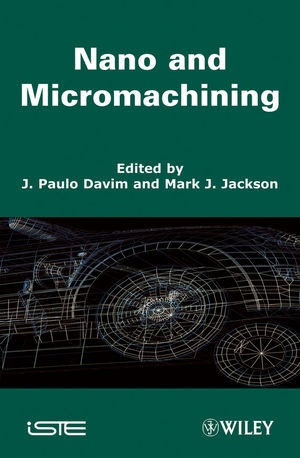Read more
Informationen zum Autor J. Paul Davim works for KINNSYS, Brussels, Belgium. Mark Jackson works for Jackson Ashcroft Associates, London, UK. Klappentext This book provides the fundamentals and recent advances in nano and micromachining for modern manufacturing engineering. It begins by outlining nanomachining before discussing various advances in field and machining processes. The coverage concludes with an evaluation of subsurface damages in nano and micromachining and a presentation of applications in industry. As such, this book serves both as a useful classroom text for engineering and machining courses at the undergraduate and graduate level, and as a reference for academics and engineers in these areas. Zusammenfassung This book provides the fundamentals and recent advances in nano and micromachining for modern manufacturing engineering. It begins by outlining nanomachining before discussing various advances in field and machining processes. The coverage concludes with an evaluation of subsurface damages in nano and micromachining and a presentation of applications in industry. As such, this book serves both as a useful classroom text for engineering and machining courses at the undergraduate and graduate level, and as a reference for academics and engineers in these areas. Inhaltsverzeichnis Preface ix Chapter 1. Nanoscale Cutting 1 Rüdiger RENTSCH 1.1. Introduction 1 1.2. Basic elements of molecular dynamics modeling 3 1.2.1. Material representation and microstructure 3 1.2.2. Atomic interaction 4 1.2.3. System dynamics and numerical description 7 1.2.4. Boundary conditions 8 1.3. Design and requirements for state-of-the-art MD cutting process simulations 10 1.4. Capabilities of MD for nanoscale material removal process analysis 12 1.4.1. Analysis of microstructure and deformation 12 1.4.2. Obtaining cutting forces, stress and temperature 15 1.5. Advances and recent developments in material removal process simulation 18 1.5.1. Complete 3D surface machining simulation 18 1.5.2. Consideration of fluids in MD cutting simulation 20 1.6. Summary and outlook 23 1.7. References 24 Chapter 2. Ductile Mode Cutting of Brittle Materials: Mechanism, Chip Formation and Machined Surfaces 27 Xiaoping LI 2.1. Introduction 27 2.2. The mechanism of ductile mode cutting of brittle materials 29 2.2.1. Transition of chip formation mode from ductile to brittle 29 2.2.2. MD modeling and simulation of nanoscale ductile mode cutting of silicon 32 2.2.3. The mechanism of ductile mode chip formation in cutting of silicon 32 2.3. The chip formation in cutting of brittle materials 35 2.3.1. Material deformation and crack initiation in the chip formation zone 35 2.3.2. Stress conditions in the chip formation zone in relation to ductile-brittle mode of chip formation 36 2.4. Machined surfaces in relation to chip formation mode 38 2.5. References 40 Chapter 3. Diamond Tools in Micromachining 45 Waqar AHMED, Mark J. JACKSON and Michael D. WHITFIELD 3.1. Introduction 45 3.2. Diamond technology 45 3.2.1. Hot Filament CVD (HFCVD) 46 3.3. Preparation of substrate 48 3.3.1. Selection of substrate material 48 3.3.2. Pre-treatment of substrate 49 3.4. Modified HFCVD process 51 3.4.1. Modification of filament assembly 51 3.4.2. Process conditions 52 3.5. Nucleation and diamond growth 53 3.5.1. Nucleation 54 3.5.2. Bias-enhanced nucleation (BEN) 55 3.5.3. Influence of temperature 56 3.6. Deposition on complex substrates 58 3.6.1. Diamond deposition on metallic (molybdenum) wire 58 3.6.2. Deposition on WC-Co microtools 58 <...

